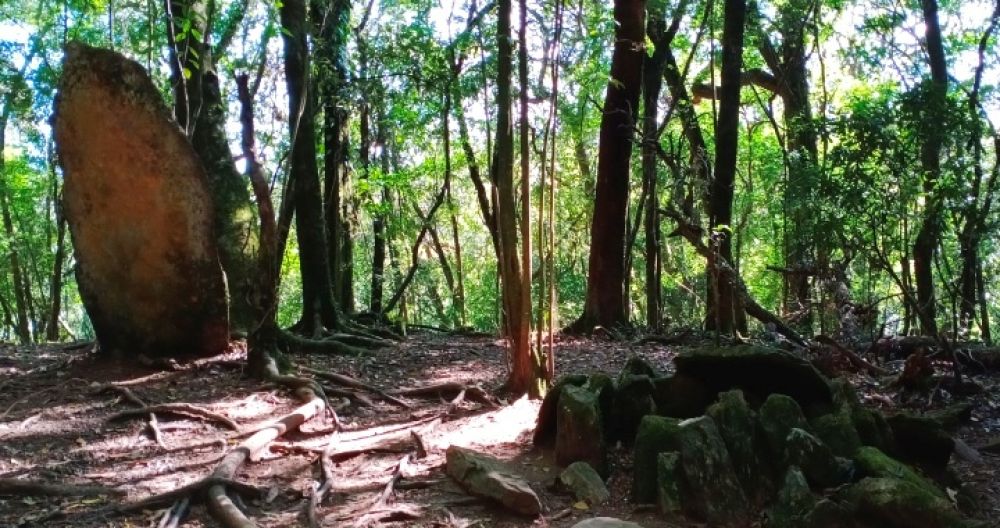

The state of Meghalaya, known as the 'abode of clouds,' is home to the serene Mawphlang Sacred Forest, one of the most treasured natural sanctuaries in India. This forest, spanning over 192 acres, is located approximately 25 kilometers from the city of Shillong, the capital of Meghalaya, and is revered by the indigenous Khasi people.
The Mawphlang Sacred Forest is not just a natural wonder, but also a place steeped in cultural and spiritual significance. For centuries, the Khasi tribes have protected the forest, abiding by strict traditional laws that forbid the removal of any plant, animal, or even a fallen leaf from the premises. These stringent conservation methods have roots in the ancient belief system of the indigenous people, which holds the forest as a sanctified place where the deity Labasa resides. The forest acts as a natural archive, preserving flora, fauna, and traditional medicinal practices passed down through generations.
The traditional practice of offering sacrifices and conducting sacred rituals remains active, with monoliths and stone structures within the forest standing as silent witnesses to these age-old traditions. The rituals performed are believed to appease the deity and ensure the well-being of the community.
Tourism in Mawphlang Sacred Forest began as a modest stream of curious visitors, mostly nature enthusiasts and researchers interested in studying the rich biodiversity and the unique cultural practices of the Khasi people. Over the years, awareness of the forest's ecological significance and cultural value has increased, causing a gradual growth in visitor numbers.
Efforts by the government of Meghalaya and local community-based organizations to promote eco-tourism have played a significant role in placing the Mawphlang Sacred Forest on the tourism map. The development of guided tours led by local villagers, who share stories and insights about the forest, has made visits more enriching and informative for tourists.
With the growing trend towards sustainable and responsible tourism, Mawphlang Sacred Forest is receiving more attention as a destination that supports conservation while providing an immersive cultural experience. Visitors are increasingly drawn to the opportunity to connect with nature and learn about the rich cultural heritage of the Khasi tribe. Trends such as nature walks, bird watching, and cultural immersion experiences are common among tourists.
The concept of 'living root bridges', another unique attraction in Meghalaya, cultivated from the roots of rubber trees by the Khasis, has fueled the interest of tourists in indigenous culture and environmental sustainability, further bringing visitors to the region.
Eco and Cultural Tourism have become the central theme, with programs designed to promote respect for the environment and avoid disturbing the delicate ecological balance. Tourism initiatives are increasingly involving local communities, ensuring that as the popularity of the sacred forest grows, the benefits are also felt by the indigenous people.
In summary, tourism at the Mawphlang Sacred Forest in Shillong, Meghalaya, has evolved from humble beginnings to become an important part of Meghalaya's attraction to visitors around the world. It serves as a model for how cultural preservation and environmental conservation can be the pillars of successful and sustainable tourism.